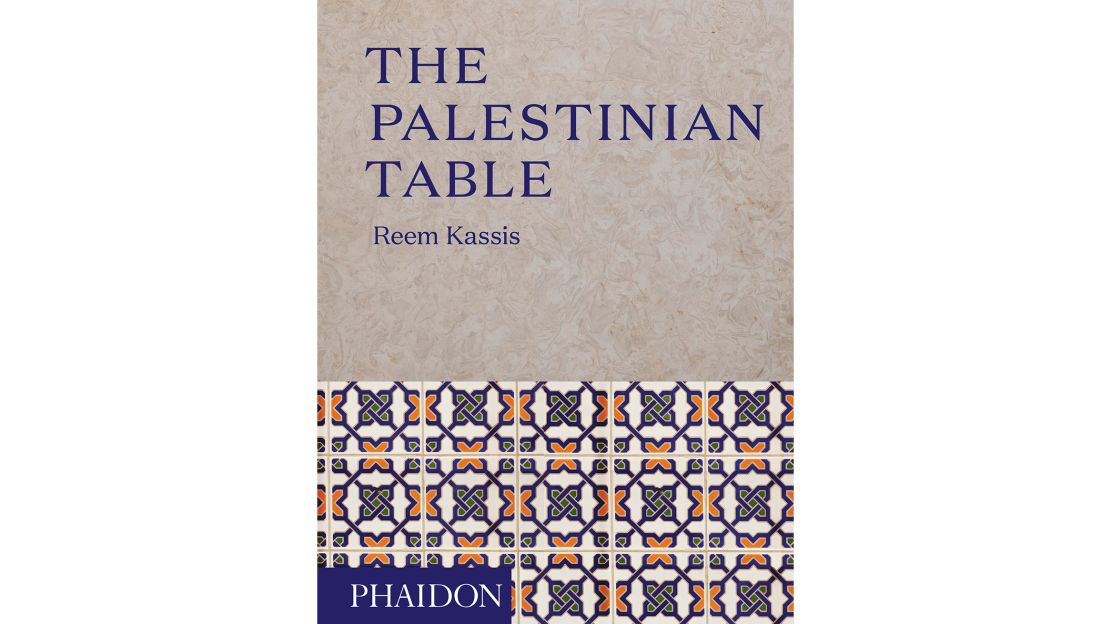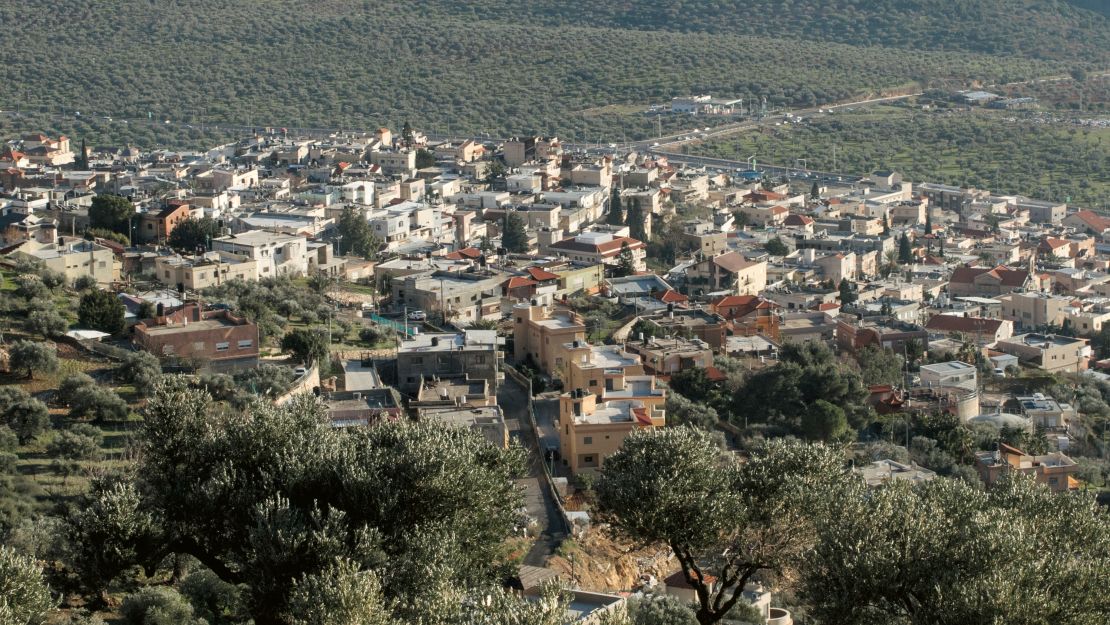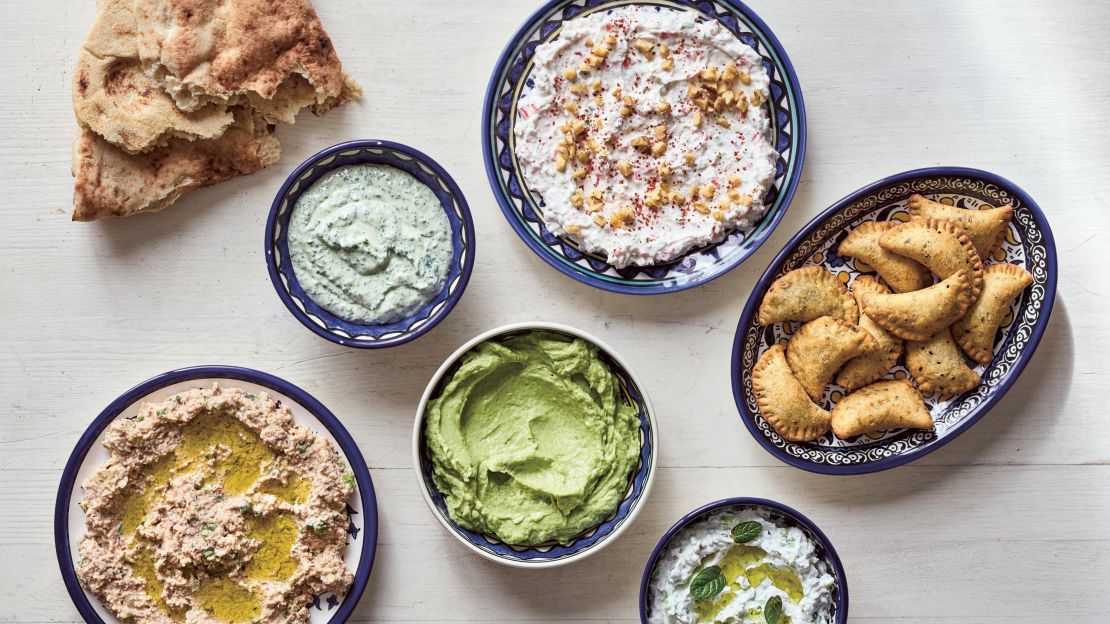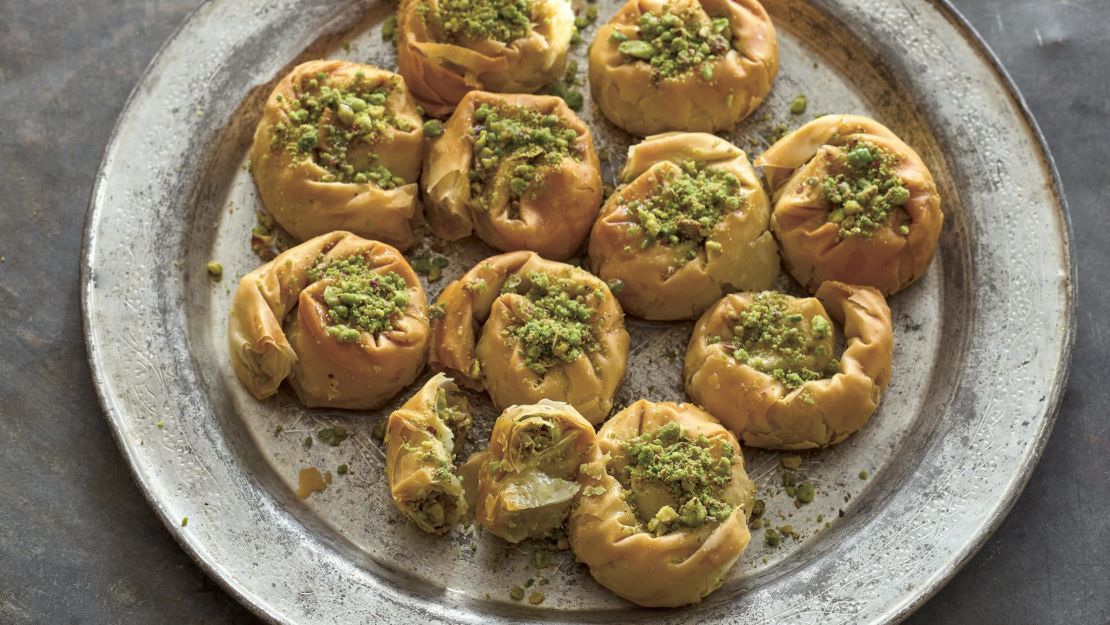Reem Kassis didn’t set out to be an author. Or a chef for that matter.
In fact she made it a point to stay as far away from the kitchen as possible.
But a desire to preserve her Palestinian heritage for her daughters led her towards her destiny in an unlikely way.
It began by collecting recipes and stories from the women in her family and before long she had gathered enough that she began to formulate a book proposal.
She was meticulous in her approach. She would step into bookstores, sifting through a bevy of award-winning cookbooks and carefully turn the pages over, thumbing through until she found the publisher’s name and information.
Then she would email them, one by one. To her surprise almost every single one emailed her back.
“The Palestinian Table” was published, and less than a year after publishing her first cookbook, she’s found herself a James Beard-nominated cookbook author, with ringing endorsements from multiple bestseller lists and the late Anthony Bourdain.
CNN Travel spoke with Reem about her unexpected dreams, and how she says she is reclaiming the Palestinian narrative:

How did the book come about?:
“After leaving Jerusalem for the US, I spent almost a decade building a business career in order to prove myself outside stereotypical female roles. So part of me felt very self-conscious about having written a proposal for a cookbook, and I think I subconsciously looked for any excuse I could find to give up on it.
“I had no classical training as a chef, I had no platform, no contacts, no experience, and all the odds were against me. I put it away and decided to forget about it. I had also just delivered my second baby girl and life was full and exhausting.
“But another part of me felt that I owed it not only to myself and my daughters, but to all Palestinians as well to give it a shot. I started compiling all my family’s recipes and stories after my first daughter was born in an effort to pass them on to her one day.
“But once I saw them all coming together, I realized that even though they were my family’s history, they were also the history of every Palestinian family, and that was a narrative I wanted to share with the world, a narrative different to the one we’re used to thinking of when we hear ‘Palestinian.’
“I now realize just how powerful food can be. It is not only a way to share our culture and narrative with the world, but also a way to preserve history, to build understanding, to give back and to inspire. The kitchen, I now see, is not a life sentence for me as a woman and a mother; it is the way I write the future that I want for my children.”
What do you want your girls to know about their Palestinian roots and about their womanhood?
“I want my daughters to know their Palestinian heritage and to be proud of it, but to also feel they can play a part in shaping its future. We may be recognized for our conflict but that doesn’t have to be the legacy we leave the world.
“We each fight our own battle in our specific field and even one person, armed with the right knowledge and passion, can make a change.
“I also know my daughters are growing up in a world where women have more freedom and face less obstacles than generations before, but the road is still long.
“So I hope my daughters see this book and my experience as an inspiration and example of what can happen when we fight against the odds to break down stereotypes, to overcome obstacles and to achieve our dreams.
“I want them to know they are strong and that they can ‘color outside the lines,’ that they don’t need to believe everything they are told and that, through it all, if there’s one thing they can count on, it is their Palestinian family unconditionally loving and supporting them (and of course feeding them!).”

What one thing do you wish people knew about the Palestinian narrative?
“I want people to know that we are more than our conflict, and that highlighting those aspects of our narrative does not detract from the importance of our plight.
“Getting to know Palestinians as people – people who love life, who want to live, who want to give their children a decent childhood and an even brighter future, who love to eat and share, who are generous and giving – it helps the world understand our struggle on a more holistic level.
“So in fact, there is not one thing I want people to know about the Palestinian narrative, rather, I want them to understand the entirety of it.”

What responses have you had since the book was published?
“By and large, Palestinian food has simply been unknown in the West.
“Now, with the rising interest in Middle Eastern food, people – especially those in culinary and foodie circles – are well aware of what Palestinian food is.
“In other pockets of people, more so in the US than the UK I think, the main misconception I see is people mistakenly recognizing Palestinian food as Israeli.
“It is natural for Israelis to enjoy similar – and even identical – foods to Palestinians since we live on the same land. But there is no denying that the origin of these foods they are enjoying is Palestinian and or Levantine and adopted from the local indigenous population.
“My book was not a political one, and it allowed our food, our stories and our history to speak for themselves.
“I have had many non-Arabs tell me that the book and stories within opened their eyes to a part of Palestinian history and culture they had never before understood and I have also had Israelis from my generation tell me that my book has helped them acknowledge a part of our history they had not wanted to consider before and to rather than fear, truly celebrate Palestinian cuisine and the large role it has played in their own developing food culture.”

Your book’s already been translated into French and is now being translated to German:
“Yes! And [it] may possibly be translated to Spanish and Arabic.
“I wrote in the intro to the book, “”The Palestinian Table” spans our entire geography from the mountains of the Galilee to the valleys of the south, from the coast of Yaffa all the way to the West Bank.
“It is scattered across the globe and built from memories of a time when most of us lived in the same land. In spite of our political circumstances and global dispersion, what ties all Palestinian tables together is more than just good food; it is the notion of ‘home,’ the spirit of generosity, the importance of family and the value of bringing people together.’
“So it is very moving to see how, regardless of where we are in the world and what language we speak, these values and this way of living are now bringing our food and the Palestinian narrative to people’s tables across the globe and also allowing Palestinians to find a piece of our home wherever we are, as we struggle for a brighter future for our children.”

Baklawa (baklava)
Adapted from “The Palestinian Table” by Reem Kassis
Preparation Time: One hour
Cooking Time: 15-20 minutes
Makes 40 pieces
“Despite the prevalence of the Middle East’s most famous dessert, it’s actually quite hard to find one that tastes good. There’s either too much syrup or not enough, poor-quality butter or nuts, too burnt, not cooked enough – the list goes on. Making it at home can seem like too much trouble, though, so people often just buy it. All this changed for me when I was in the United States for a wedding and I saw my mother-in-law take out several packages of phyllo (filo) pastry and whip up a large tray of the cutest spiral-shaped baklawas in thirty minutes. Although not traditional, this recipe, adapted from hers, is so easy, fresh and delicious that I now regularly make this once-finicky dessert at home.”
Ingredients
– two cups (7 oz/200g) ground pistachios, plus extra for sprinkling
– ¾ cup (6oz/180g) granulated sugar
– one tablespoon rosewater
– 5 oz/150g ghee or butter, melted
– 40 phyllo (filo) pastry sheets, about 6 x 8 inches/15 x 20cm (you will probably have to cut larger sheets down to this size)
– ½ quantity flavored sugar syrup (see recipe below), at room temperature
Instructions
Preheat the oven to 350 F/180 C/Gas Mark 4 and line a baking sheet with parchment. Combine the ground pistachios, sugar and rosewater in a bowl.
Place the phyllo (filo) sheets on your work surface and cover with a damp dish towel to avoid drying. Working with just one sheet at a time, remove a sheet of phyllo and brush with the melted ghee. Spoon about one teaspoon of the pistachio mixture across the short edge of the phyllo sheet.
Roll the sheet into a cigar shape, brushing with the melted ghee as you roll, then roll the cigar into a snail shape, taking care not to rip the pastry. Brush the rolled baklawa all over with more melted ghee, and place onto the lined baking sheet. Continue until all sheets are rolled.
Brush all the rolled pieces with the melted ghee one more time then bake in the oven for 15 to 20 minutes, or until the baklawas are a light golden brown. Remove from the oven, and pour the sugar syrup over the baklawas.
Alternatively, let the baklawa cool down to room temperature and pour freshly made warm syrup over. Sprinkle each piece with very finely ground pistachios and transfer to a serving platter. Variation: In place of the pistachios, you can use other nuts, such as walnuts, almonds, cashews or hazelnuts. If using walnuts, add one teaspoon ground cinnamon to the stuffing.
Flavored sugar syrup
Preparation time: Five minutes
Cooking time: Five minutes
Makes two cups (16 fl oz/475 ml)
Ingredients
– Two cups (14 oz/400g) superfine (caster) sugar
– Squeeze of lemon juice
– ½ teaspoon orange blossom water
– ½ teaspoon rosewater
Instructions
Most traditional Arabic sweets are sweetened with syrup, which is generally flavored with rosewater or orange blossom water. The strength of these flavorings varies from brand to brand so always add them gradually and taste to avoid ending up with something too strong.
Another key point to remember when using syrup in desserts is that unless stated otherwise only one of the two should be hot: either pour hot syrup onto cooled pastry or cooled syrup onto hot pastry. In a small heavy pan, combine the sugar, 1½ cups (12 fl oz/ 350 ml) water, and the lemon juice and bring to a boil over medium-high heat.
Simmer until slightly thickened, about five minutes. Remove from the heat and add the flavorings. Allow to cool before storing in a container in the refrigerator for up to two months. Note: For a runnier consistency use one part sugar to one part water; for a thicker syrup use two parts sugar to one part water.
Responses have been edited for clarity and brevity.
To learn more about this book or to order online check out Reem Kassis’ website.
Phaidon, $39.95 US/54.95 CAN, October 2017



